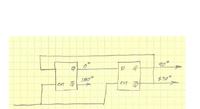neazoi
Advanced Member level 6
74f74
Hello I need to make a quadrature phase shifter (0, 90, 180, 270) and frequency divider using 74F74 flip flop.
I know how to achieve it using CD4013 but the 74F74 has also a set and clear pins.
Should I connect them to ground or to vcc if I want them not to affect its operation?
Hello I need to make a quadrature phase shifter (0, 90, 180, 270) and frequency divider using 74F74 flip flop.
I know how to achieve it using CD4013 but the 74F74 has also a set and clear pins.
Should I connect them to ground or to vcc if I want them not to affect its operation?
